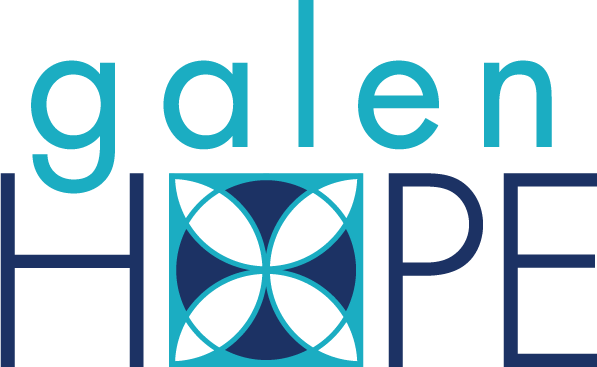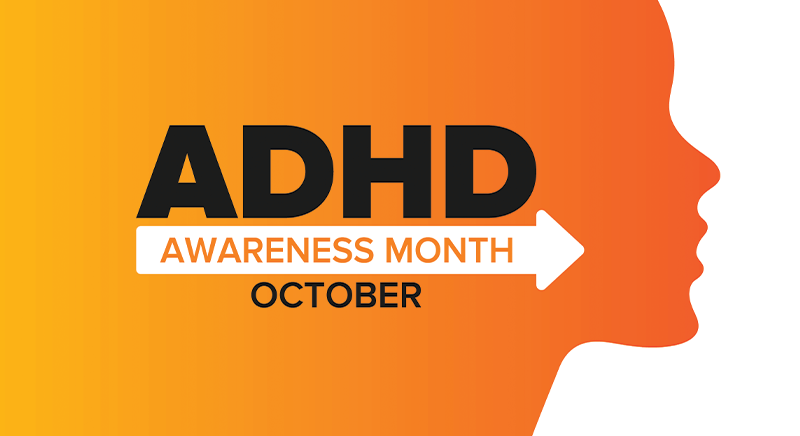October is ADHD Awareness Month, a dedicated time when we come together to shine a light on Attention Deficit Hyperactivity Disorder (ADHD). ADHD is a condition that affects millions of individuals worldwide. This month, we embark on a journey of understanding, compassion, and advocacy as we look at the intricacies of ADHD, challenging misconceptions, and fostering a more inclusive and supportive society for those with ADHD.
Let’s examine ADHD, from its definition and types to its causes, diagnosis, and management.
What is ADHD?
ADHD stands for Attention Deficit Hyperactivity Disorder. It is a neurodevelopmental disorder that primarily affects an individual’s ability to focus, control impulses, and regulate their level of activity. ADHD is typically diagnosed in childhood but can persist into adolescence and adulthood.
Here are some key characteristics and features of ADHD:
Inattention
Individuals with ADHD often struggle with sustaining attention and focus on tasks, especially those that require prolonged mental effort. They may have difficulty organizing tasks and activities, following instructions, and paying attention to details.
Hyperactivity
Some individuals with ADHD display hyperactive behavior, which includes excessive restlessness, fidgeting, and difficulty sitting still. This is more commonly seen in children.
Impulsivity
Impulsivity refers to acting on impulses without thinking through the consequences. People with ADHD may have difficulty controlling their impulses, leading to hasty decision-making and potential disruptions in social and academic settings.
Variability in Symptoms
ADHD symptoms in adults and children can vary widely from person to person. Some individuals may predominantly exhibit symptoms of inattention, while others may primarily display hyperactivity and impulsivity. Many individuals have a combination of these symptoms, leading to three main subtypes: predominantly inattentive type, predominantly hyperactive-impulsive type, and combined type.
Onset and Duration:
ADHD symptoms typically manifest in childhood, often becoming noticeable around preschool or early school years. However, they often continue into adolescence and adulthood, affecting various aspects of life, including education, work, and relationships.
Impact on Daily Life
ADHD can impact many areas of daily functioning. Children with ADHD may
- have difficulties in school
- struggle with peer relationships
- experience academic challenges
Adults with ADHD may encounter difficulties with
- organization
- time management
- maintaining stable employment
ADHD Treatment
ADHD can often be effectively managed with a combination of interventions. Treatment may include
- medication
- behavioral therapy
- counseling
- lifestyle modifications
The choice of ADHD treatment often depends on the individual’s specific symptoms and needs.
It’s important to note that ADHD is a recognized medical condition, and a proper diagnosis by a qualified healthcare professional is essential for effective management. With appropriate support and understanding, individuals with ADHD can lead fulfilling lives and reach their full potential.
Types of ADHD
Attention Deficit Hyperactivity Disorder (ADHD) is a complex condition that presents in different ways. As the understanding of ADHD has expanded over recent decades, so have the ways that ADHD is classified clinically (ADHD vs ADD, for example).
Today, there are primarily three recognized types or subtypes of ADHD, each characterized by its predominant symptoms. These subtypes help healthcare professionals tailor treatment and support to an individual’s specific needs. The three main types of ADHD are:
Predominantly Inattentive Presentation (ADHD-PI):
- This subtype is primarily characterized by difficulties with attention and focus.
- Individuals with predominantly inattentive presentation may have trouble sustaining attention to tasks, organizing activities, following through on instructions, and paying attention to details.
- They might seem forgetful, easily distracted, and disorganized.
- Hyperactivity and impulsivity are less prominent in this subtype.
Predominantly Hyperactive-Impulsive Presentation (ADHD-HI):
- This subtype is characterized by hyperactivity and impulsivity without significant issues with inattention.
- Individuals with predominantly hyperactive-impulsive presentation may be excessively restless, fidgety, and have difficulty sitting still.
- They often act on impulses without thinking through the consequences, which can lead to challenges in social situations and decision-making.
- Inattention is less pronounced in this subtype.
Combined Presentation (ADHD-C):
- This is the most common subtype of ADHD, characterized by a combination of symptoms from both inattentive and hyperactive-impulsive categories.
- Individuals with combined presentation experience difficulties with attention, focus, hyperactivity, and impulsivity.
- They may exhibit symptoms such as forgetfulness, restlessness, and impulsive behavior.
It’s important to note that while these subtypes help categorize the primary symptoms, ADHD is a highly variable condition, and each person may experience it differently. Additionally, the presentation of ADHD can change over time, particularly as children with hyperactivity may become less hyperactive as they reach adulthood.
A comprehensive evaluation by a healthcare professional is crucial for an accurate diagnosis of the specific type and severity of ADHD. Treatment plans, which may include medication, therapy, and lifestyle modifications, are then tailored to address an individual’s unique needs and challenges.
Living with ADHD
Living with Attention Deficit Hyperactivity Disorder can be a unique and often challenging experience, both for individuals diagnosed with ADHD and for their families and support networks. ADHD is a lifelong condition, but with the right strategies and support, individuals with ADHD can lead successful and fulfilling lives. Here are some key aspects of what it’s like to live with ADHD:
Daily Challenges
Individuals with ADHD often struggle to sustain attention and focus, which can make tasks that require concentration, such as school or work assignments, challenging. Impulsivity can lead to difficulties in making impulsive decisions, interrupting others during conversations, or taking risks without considering consequences.
In some cases, individuals with ADHD may have a high level of physical energy and restlessness, making it difficult to sit still or engage in calm activities.
Academic and Occupational Impacts
In school, ADHD can affect academic performance, time management, and organizational skills.
In the workplace, individuals with ADHD may face challenges related to focus, meeting deadlines, and maintaining consistent productivity.
Emotional and Social Impacts
ADHD can affect emotional regulation, leading to mood swings, frustration, and low self-esteem. Social interactions can be affected by impulsive behavior, interrupting others, or difficulty in picking up on social cues, which can sometimes result in strained relationships.
Promoting awareness and dispelling stigmas surrounding ADHD is crucial. It’s a condition that affects millions worldwide, and the more we understand it, the better equipped we are to provide the necessary support and accommodation. ADHD Awareness Month serves as a reminder of the importance of empathy, education, and advocacy.
the road to wellness starts by seeking help. today.
Built on the principles of assertive community treatment, Galen Hope is an eating disorder and mental health treatment center offering individualized treatment options that include Intensive Outpatient (IOP), supported housing, and Partial Hospitalization Programs (PHP). As a “Community of Integrated Wellness,” we pride ourselves in fostering a thoughtful and meaningful care experience that can guide our clients on their road to recovery and increased quality of life, regardless of diagnosis. Galen Hope currently offers separate, age-specific programming for adolescents ages 12-17 and adults 18 and up, of all genders.
To learn more, or to join our community for integrated wellness, please contact us today.
Belong. Heal. Grow.

